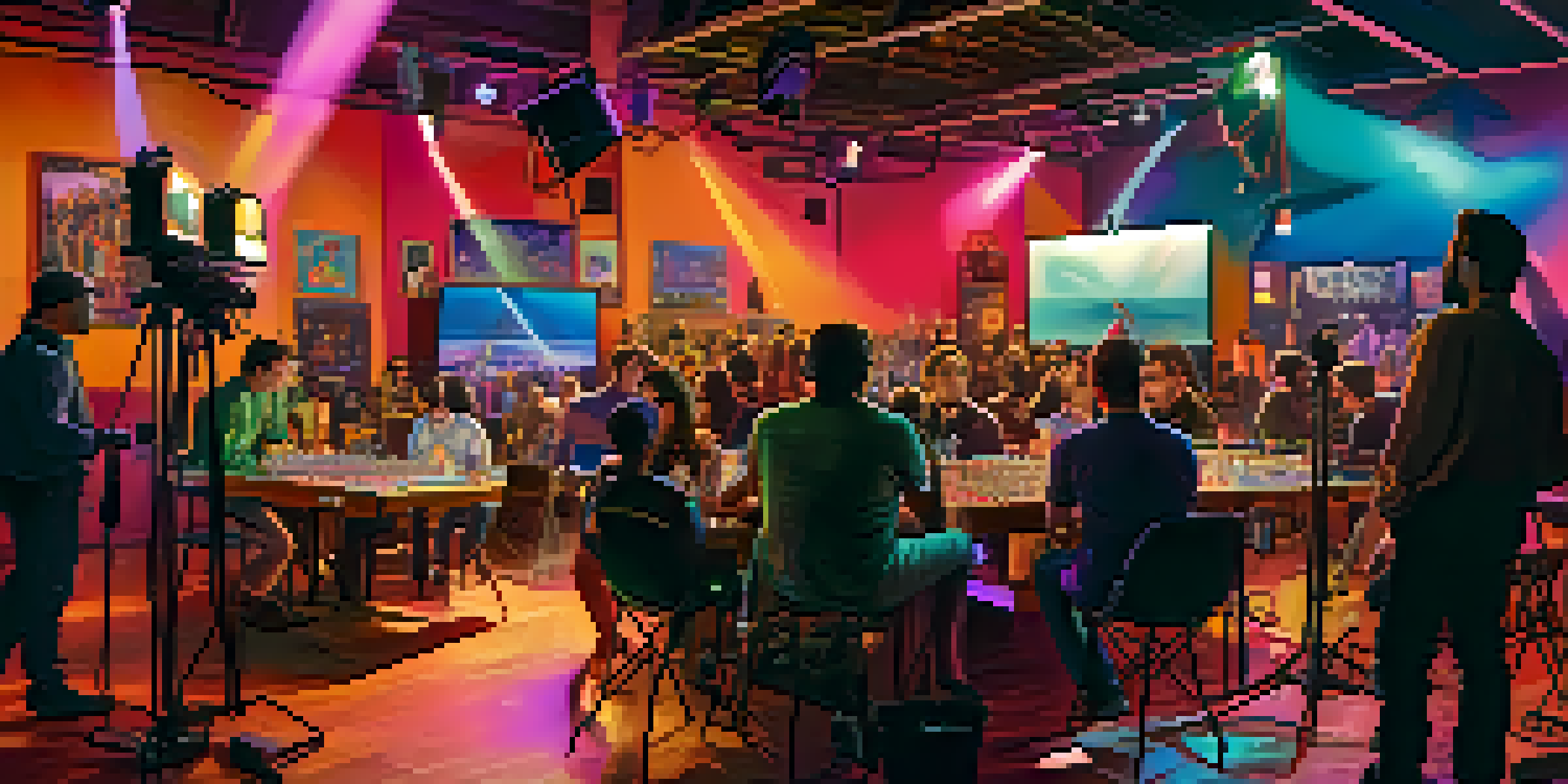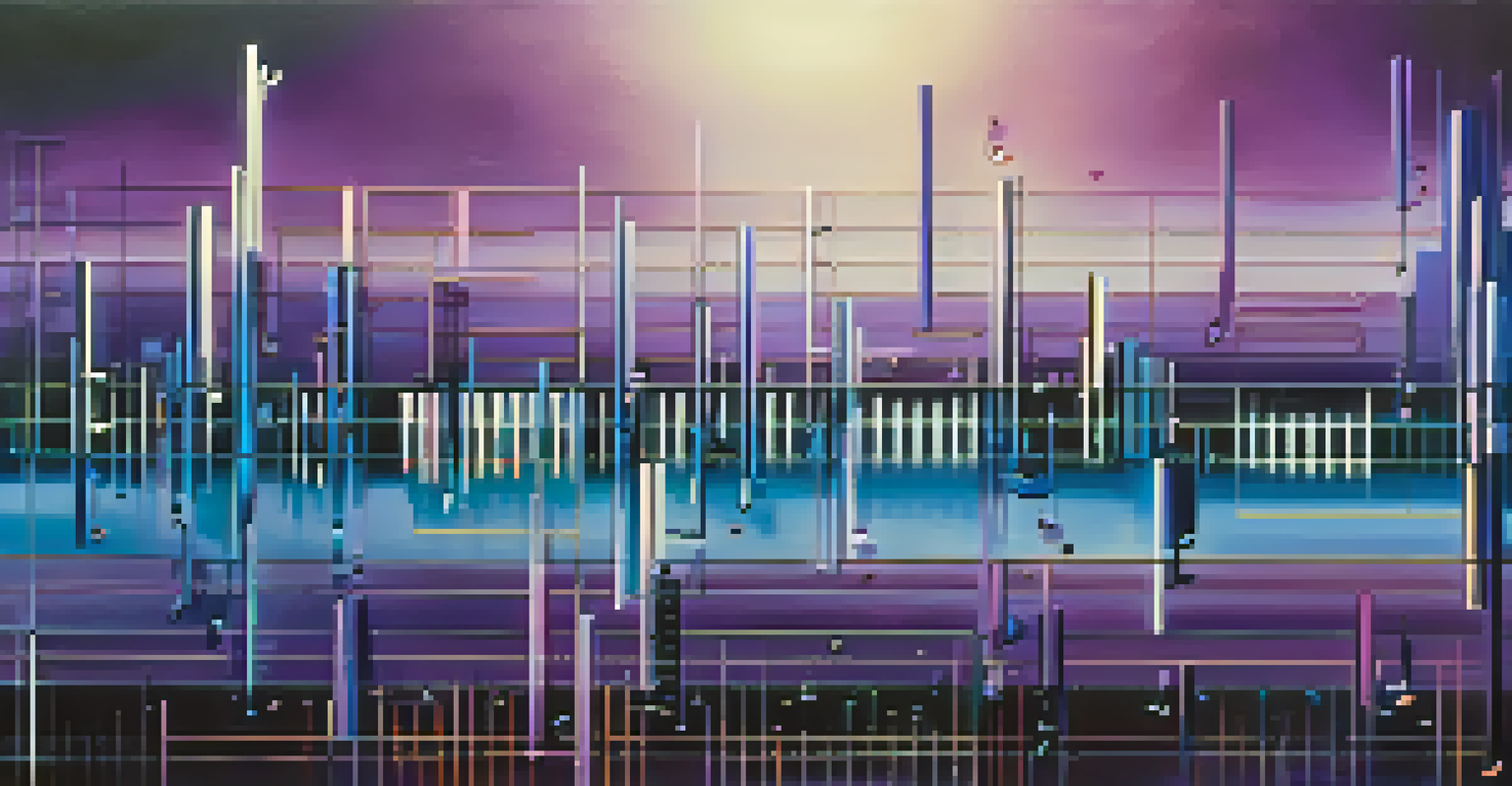The Role of Music in Film: Enhancing Narrative Through Sound

Understanding the Importance of Film Music
Music in film is more than just background noise; it plays a vital role in storytelling. It sets the mood and tone, helping audiences connect with characters and their journeys. Just think of a suspenseful scene; the tension often builds through the carefully orchestrated sound that accompanies it.
Music is the shorthand of emotion.
Consider iconic films like 'Jaws' or 'Star Wars.' The music in these films is so recognizable that it evokes instant emotions and memories. This instant recognition shows how powerful a well-composed score can be in creating a lasting impression.
Ultimately, film music is a storytelling device that enhances the narrative. It can guide the audience's emotions, making them laugh, cry, or feel suspense, ensuring that they are fully immersed in the cinematic experience.
How Music Shapes Audience Emotions
Have you ever noticed how a particular song can instantly change your mood? Film composers harness this power to manipulate audience emotions. Through tempo, harmony, and key choices, music can evoke feelings of joy, sadness, or fear at precisely the right moments.

For example, in 'The Lion King,' the song 'Circle of Life' not only introduces the story but also sets a hopeful tone for the film. Similarly, a somber score can heighten the emotional weight of a tragic scene, making it resonate more deeply with viewers.
Film Music Enhances Storytelling
Music in film sets the mood and guides audience emotions, making narratives more immersive.
This emotional connection is why music is often considered the heartbeat of a film. When done right, it creates an unforgettable experience that lingers long after the credits roll.
Creating Atmosphere Through Sound Design
Sound design and music work hand in hand to create a film's atmosphere. While music composes the emotional backdrop, sound design fills in the details, from the rustling of leaves to the thud of footsteps. Together, they create a rich, immersive world for viewers.
The music is not in the notes, but in the silence between.
Take 'Inception' as an example. The layered sound design, coupled with Hans Zimmer's powerful score, draws the audience into the complex dream world. Each sound element enhances the film's tension and intrigue.
By meticulously crafting soundscapes, filmmakers can transport audiences into different settings and emotions. This collaboration between music and sound design allows for a more nuanced storytelling experience.
Motifs and Themes: Musical Storytelling
Motifs, or recurring musical themes, serve as a powerful storytelling tool in film. By associating specific melodies with characters or ideas, composers can create a deeper narrative connection. Think of how Harry Potter's theme evokes a sense of adventure and nostalgia every time it plays.
When a motif reappears, it reinforces character development or emotional arcs. For instance, in 'The Godfather,' the haunting theme is tied to family loyalty and the darker aspects of the characters’ lives. This clever use of music adds layers to the storytelling.
Silence Heightens Emotional Impact
Effective use of silence can create tension and emphasize pivotal moments in a film.
Motifs not only enhance the narrative but also make the film more memorable. Audiences often leave the theater humming these tunes, further solidifying their connection to the story.
Cultural Influences in Film Music
Film music often reflects the cultural context in which a movie is made. Composers draw inspiration from various musical traditions, incorporating different styles to enhance authenticity. A film set in Japan might include traditional Japanese instruments, adding depth and credibility to the story.
For example, 'Crouching Tiger, Hidden Dragon' features a score that combines Western orchestration with Eastern melodies, creating a unique sound that complements the film's themes of love and honor. This fusion allows audiences to experience a different culture through music.
By integrating cultural elements, filmmakers can create a richer narrative tapestry. Music becomes a bridge that connects viewers to the characters’ backgrounds and experiences.
The Impact of Silence in Film
While music is essential, silence also plays a crucial role in film. It can heighten tension, create suspense, or emphasize a pivotal moment. The absence of sound can draw viewers in, forcing them to focus on the visual elements and the characters' emotions.
Consider a scene where a character experiences a shocking revelation. The sudden silence amplifies the impact, allowing the audience to absorb the weight of the moment. This stark contrast to a busy soundtrack can be incredibly powerful.
Cultural Elements Enrich Soundtracks
Incorporating diverse musical traditions adds authenticity and depth to film narratives.
Silence, when used effectively, can be just as impactful as a well-composed score. It reminds us that sometimes, what is left unsaid carries the most significance.
The Evolution of Film Music Over Time
Film music has evolved significantly since the early days of cinema. Silent films relied on live orchestras to convey emotions, while modern films have access to advanced technology and a wider range of musical styles. This evolution has broadened the possibilities for how music can enhance narratives.
In the past, scores were primarily orchestral, but today, genres from rock to electronic are common. Films like 'Guardians of the Galaxy' showcase a nostalgic playlist that adds layers to the narrative, appealing to various generations.

As technology continues to advance, so too will the ways in which music is used in film. This ongoing evolution promises exciting possibilities for storytelling, ensuring that music remains a vital part of the cinematic experience.